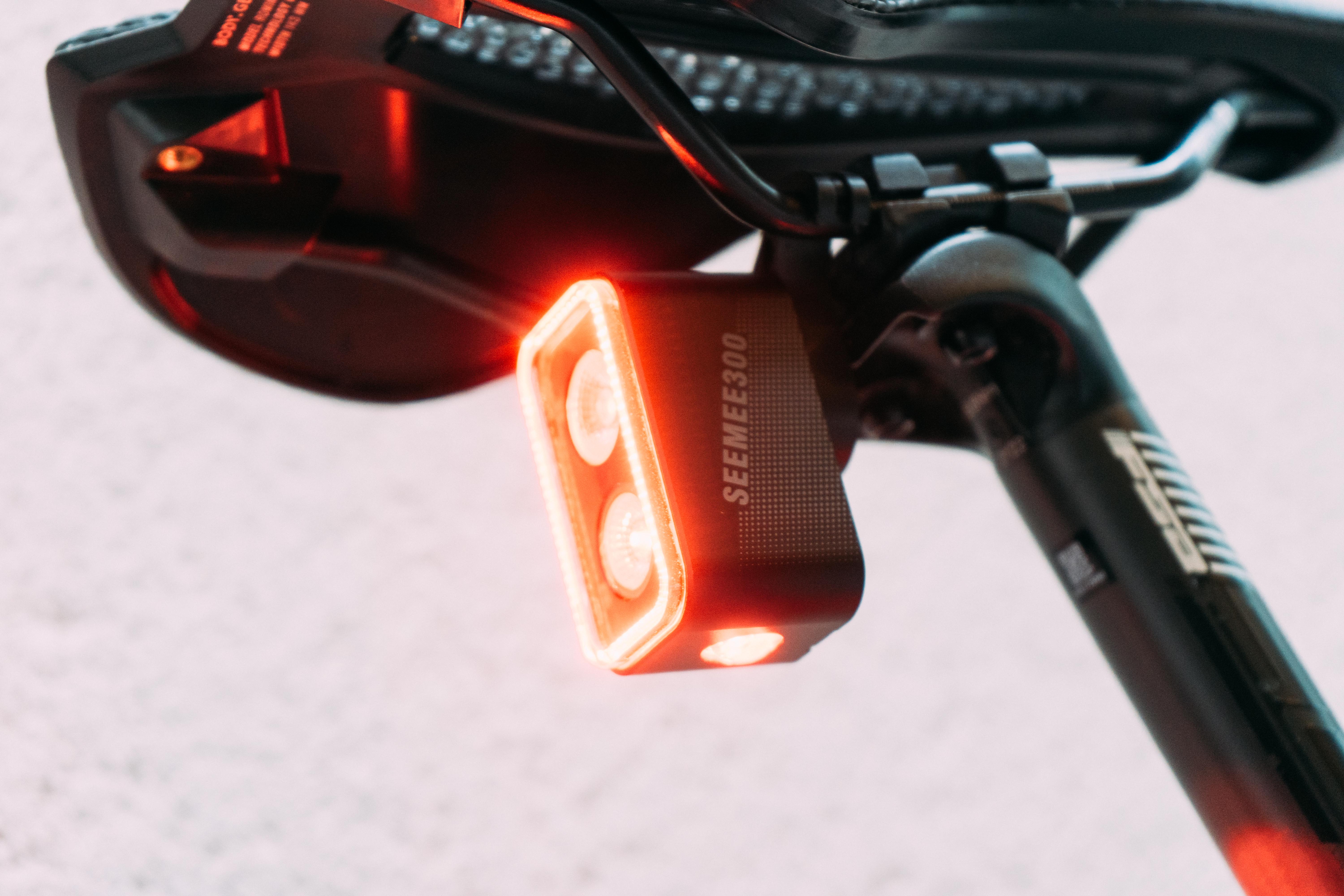Cyclingnews Verdict
Brilliant features, incredible battery life, and amazing value. There is very little to fault here
Pros
- +
Market-leading battery life
- +
Brilliant mounts
- +
Downward facing bulb is very effective
- +
Supremely bright
Cons
- -
Mode selection is confusing
- -
Could dazzle other riders on higher brightness
You can trust Cyclingnews
Price: £49.99 / $59.99
Max Lumens: 300
Weight: 84.5g
Battery Life: 6-200hrs
Rear bike lights, more so than front, have seen little change over the years. LED bulbs have replaced filament ones, but when the chips are down most rear bike lights simply shine a red light straight backwards in an effort to make sure distracted motorists notice you.
Smart features are now pretty frequently seen, with the likes of the Exposure Boost-R offering brake lighting and ‘Peloton’ mode whereby it dims when it detects a rider behind you so as not to dazzle them. The Knog Cobber range opts to curve a panel of small LEDs around the light body, greatly increasing side visibility, and here, in the case of the wonderful Magicshine SEEMEE300, we get a LED bulb pointing not only rearwards but downwards too.
I’ve been riding out with the SEEMEE300 for the last few weeks of dark excursions and have been extremely impressed. It’s bursting with features, has a monumental battery life, great mounts, and while the mode selection is a little confusing, the modes as they exist are pretty well thought out. On top of all that, it’s very reasonably priced, which is why it’s been given the nod as the best rear bike light overall in my guide to the best bike lights.
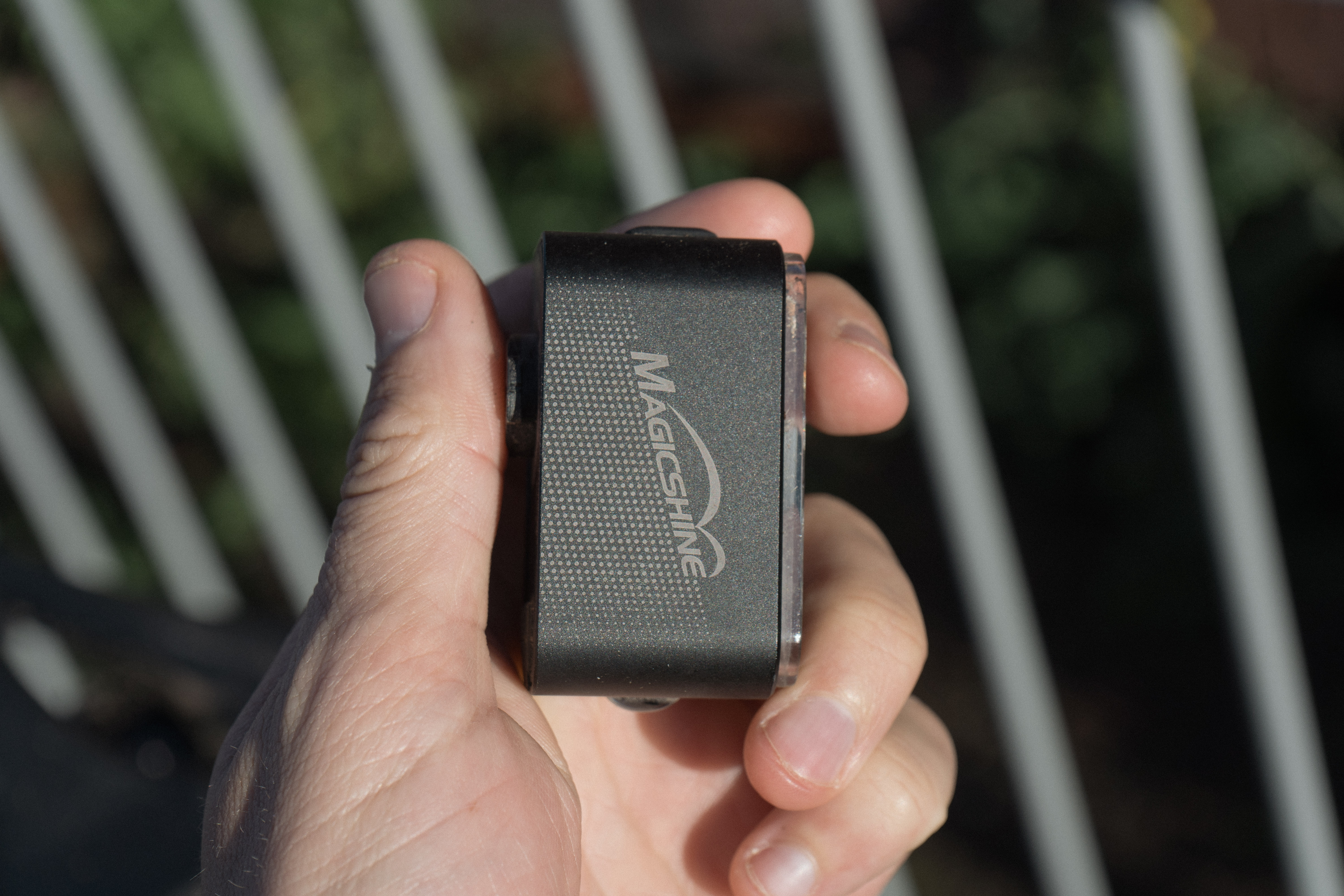
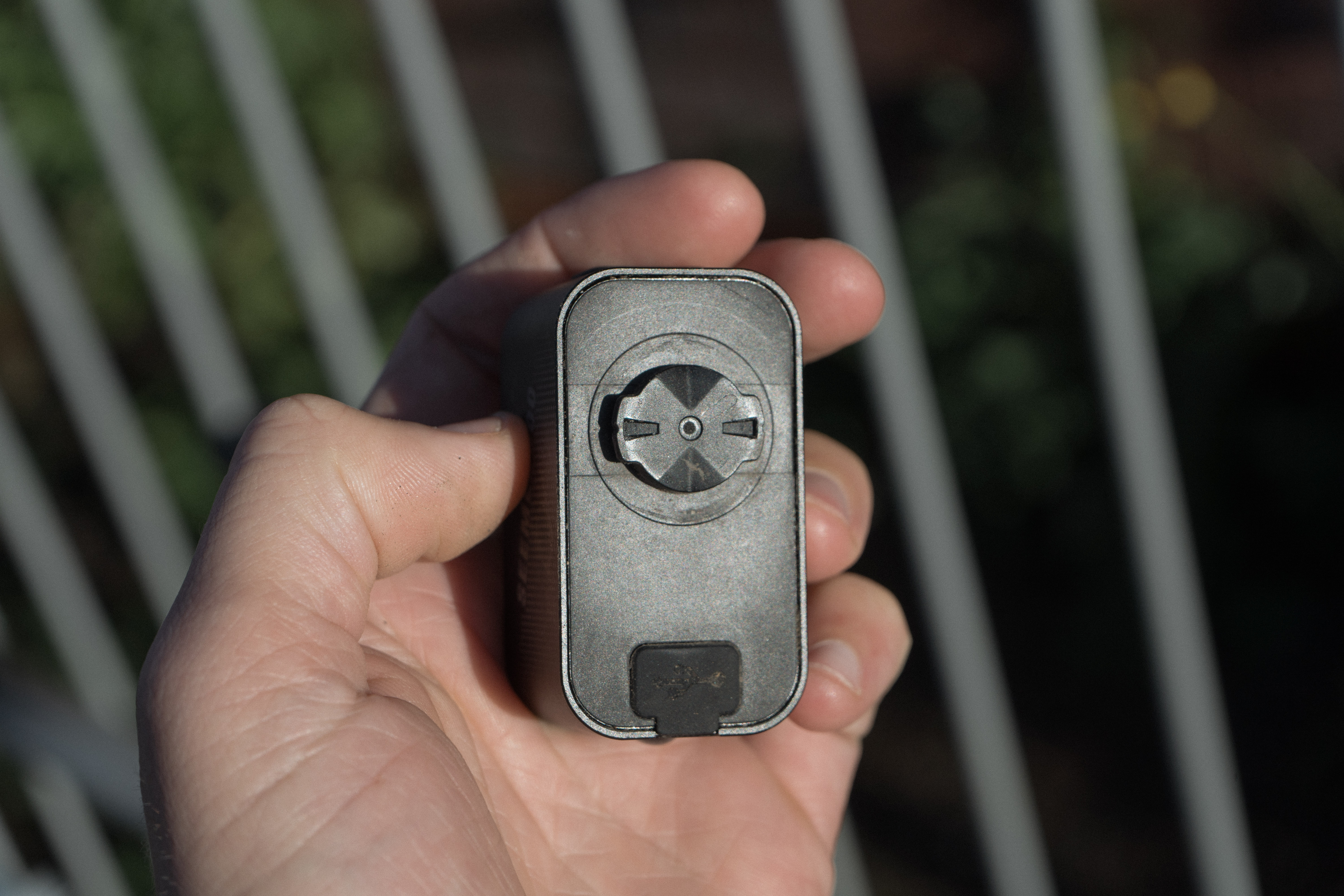
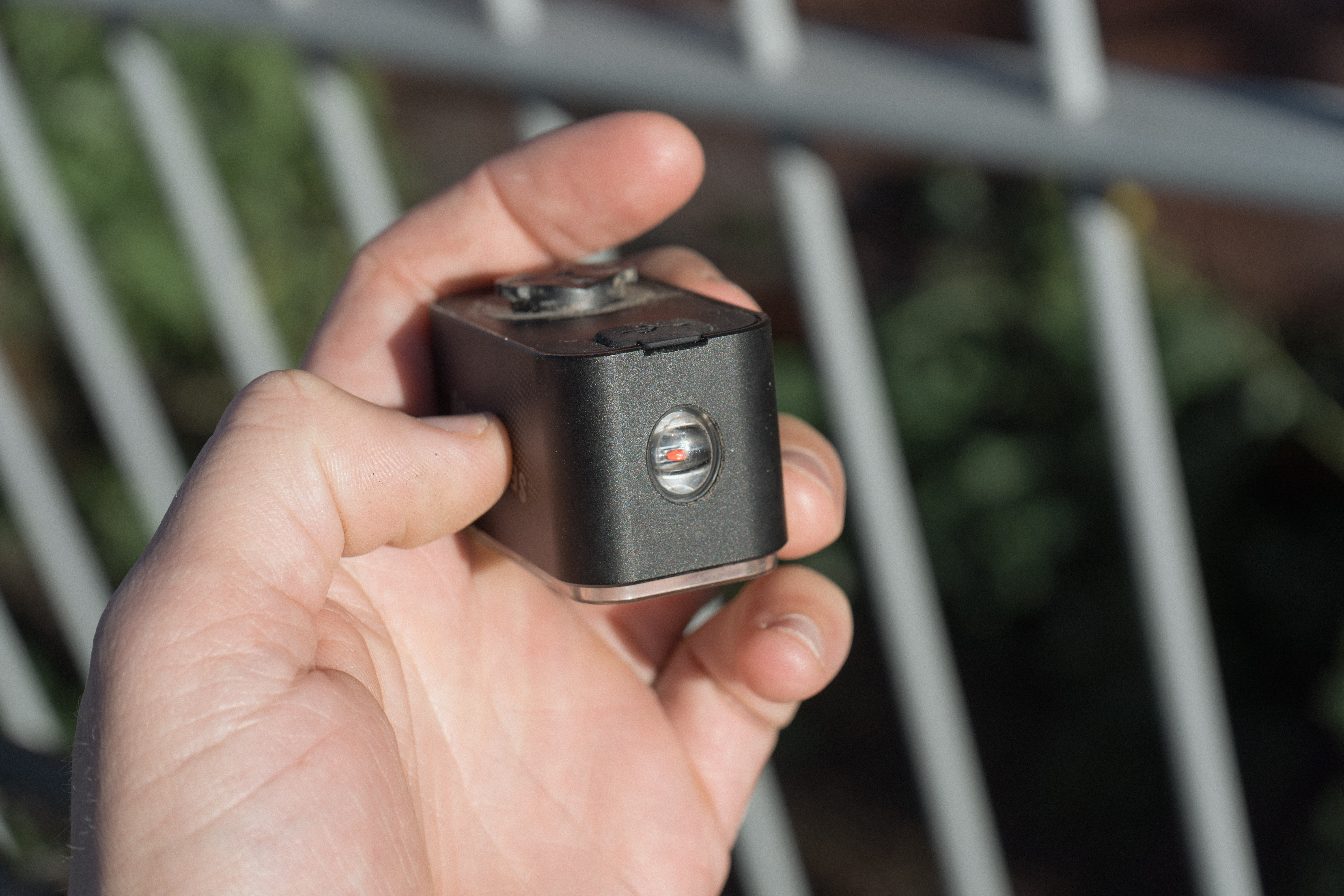
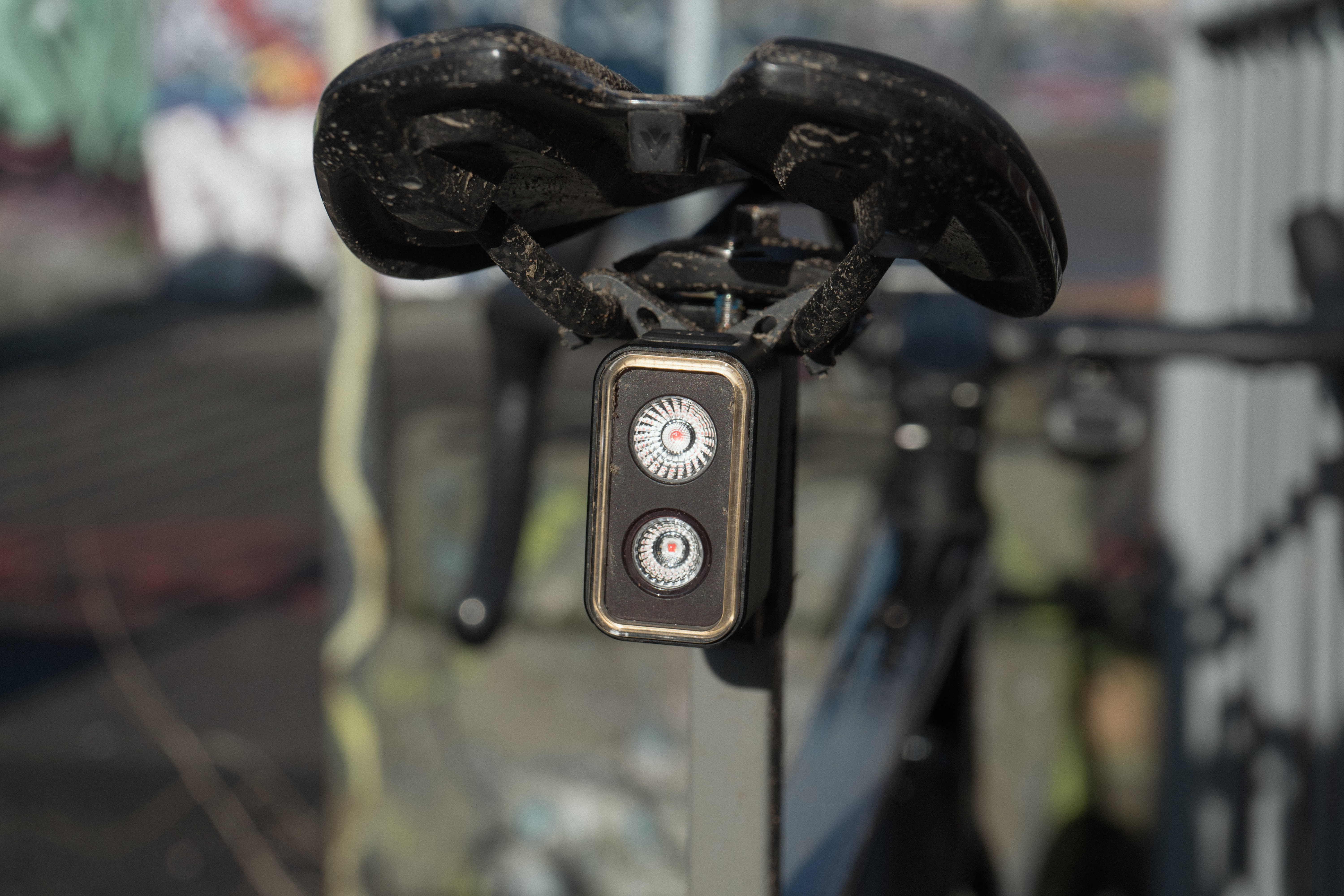
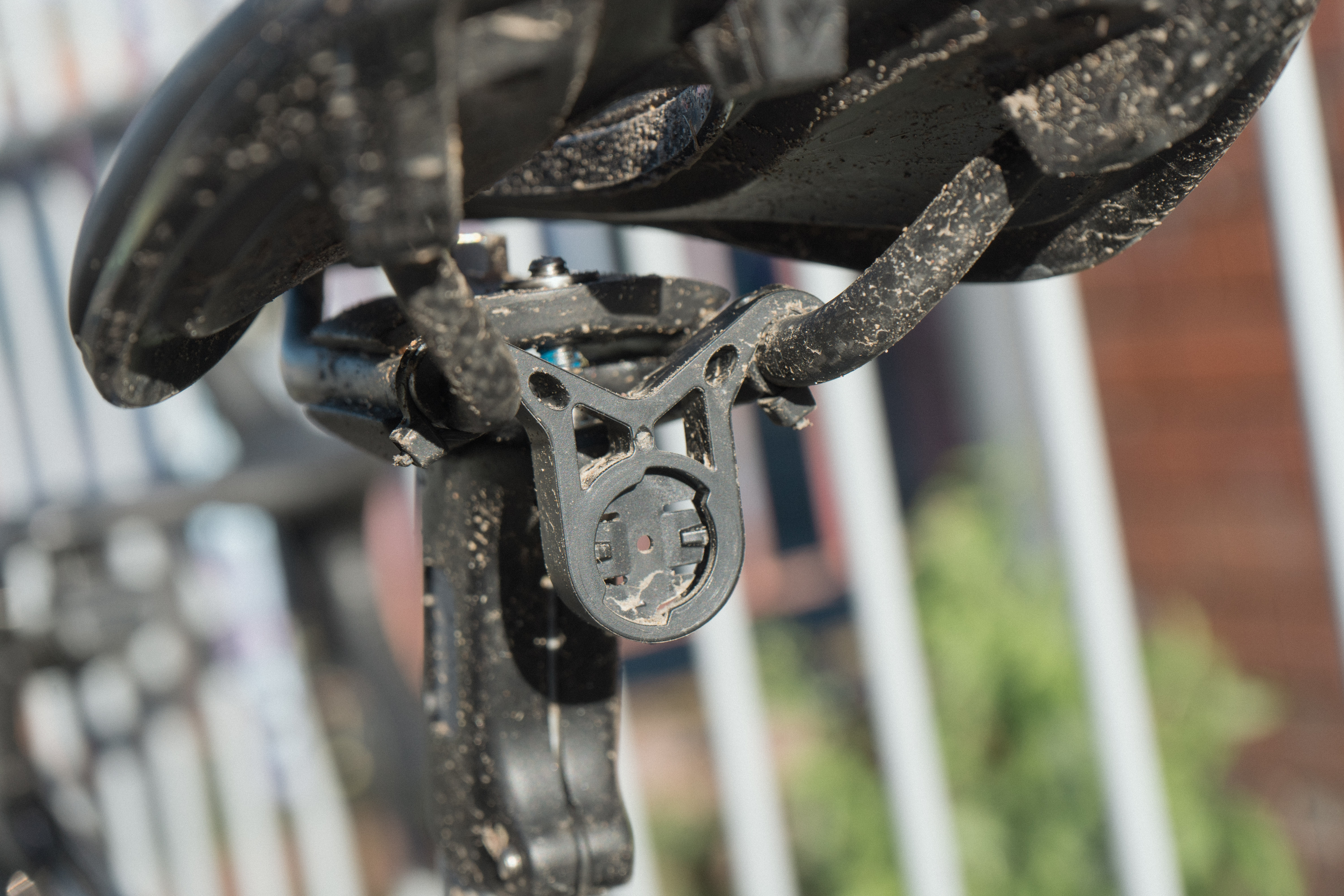
Design and aesthetics
The Magicshine SEEMEE300 is quite a chunky light, and one certainly not going to be seeing much use on the start line of any hill climbs. It’s boxy, and both tall and deep. The rear face features two identical diameter LED lamps, but one is a wider angle and the other more of a spotlight. These are both surrounded by a transparent halo which frames the lamp, and provides a little more side visibility. So far, so normal, other than being a little on the large side.
However, if you gaze upwards at the light from below (I don’t suggest doing this while riding) you will see a protruding clear hemisphere dropping downwards, encasing a single red LED bulb. This ‘Optitracing’ light projects a wide cone of red light onto the road around you, massively increasing your illuminated footprint, and as such your side visibility too.
The large form houses a whopping battery for a rear light. At 1,600mAh it’s twice as capacitous as that of the Knog Mid Cobber, and with that large size, it boasts a monumental 200hrs in its Eco mode. Even for the most forgetful of users, that should see you through a solid few weeks of commuting between charges, and more than a few night rides in total darkness until dawn.
In terms of mounting options, in the box you get a seatpost mount with a sturdy rubber strap and a saddle rail mount. The seatpost mount has a little notch in it to allow its use on bladed aero seatposts, though it’s not ideal for D-shaped units. The saddle rail clamp simply clips onto your saddle rails and is very neat. It seems sturdy, but one of my ever-helpful Instagram followers pointed out that it really is advisable to secure it in place with the included zip ties. Clipping the lights in and out of the mounts is a breeze, and utilises a miniaturised version of the Garmin ¼ turn mount.
As you’d expect for a rear light that’s going to be showered with spray constantly unless you’re using fenders, it is IPX-6 rated, which means it’s fine for ‘high-pressure water stream from any angle’. Any higher rating would allow its immersion, which I think we can agree is overkill for a bike light. The USB-C cover is on the backside of the light, away from any direct spray, and also covered by a really solid rubber bung.
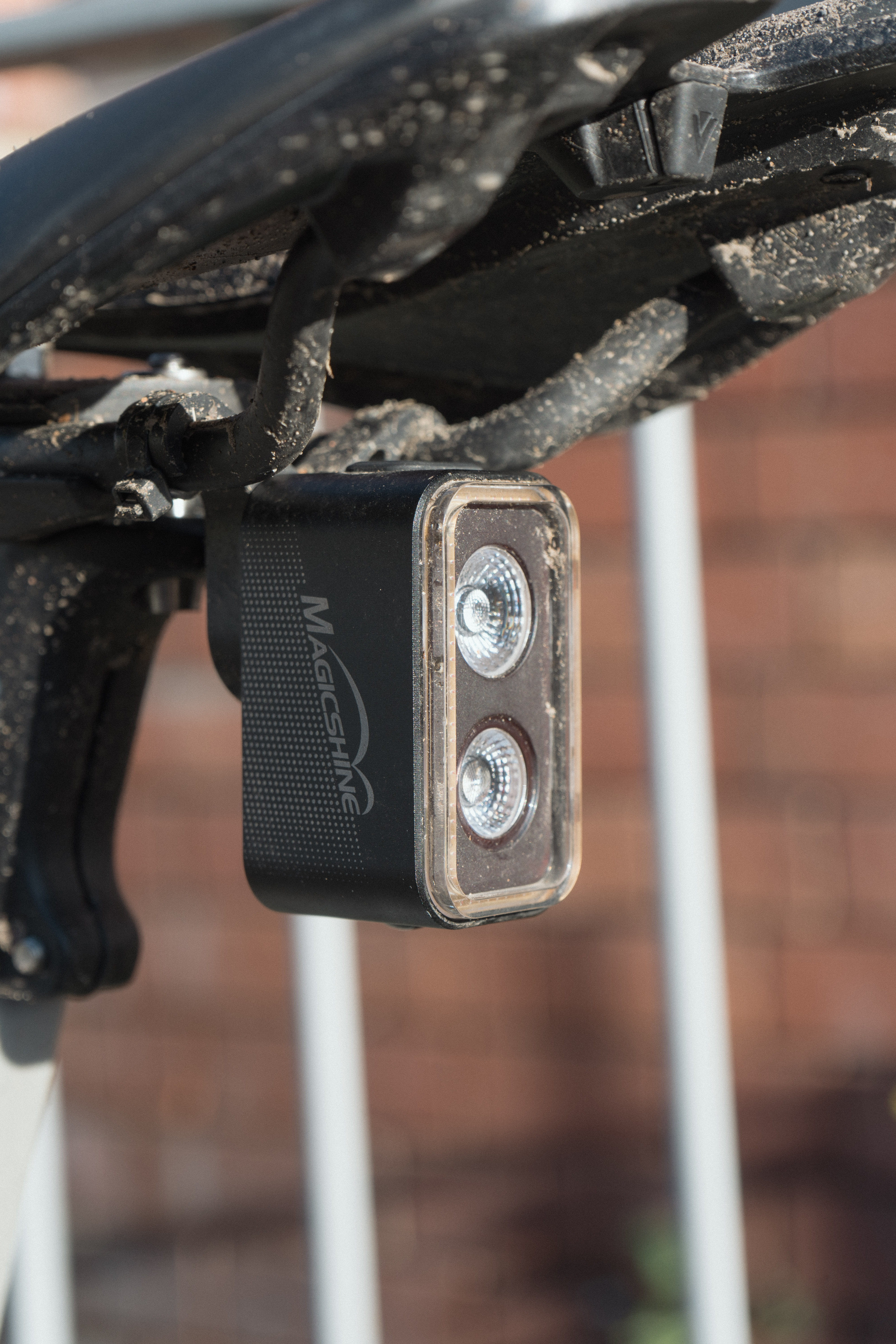
Performance
For the most part, and in the context that I now have a giant box of all the best bike lights on the market, this is the one I fit on my bikes when I’m not actively testing something else. It’s brilliant. It’s superbly bright, more than enough for being seen at night, and plenty bright enough for daytime running too in higher modes.
You could quite easily just set it to the ‘Smart’ mode and have it adjust the brightness accordingly. It’ll be brighter during the day, but it does without the downward-facing Optitracing bulb in the sunshine. At night it gets dimmer in general so as not to dazzle, but adds that downward bulb.
Actually, my main criticism is in the mode selection, and it’s the only thing I had to consult the manual for. The modes are all some combination of flashing main bulbs, solid Optitracing, or solid main bulbs and flashing Optitracing, but it isn’t overly clear which is which when you’re heading out on a ride, and took me a few cycles through each of the five modes. This is slightly compounded by the fact the smart mode isn’t the same brightness all the time, and that the light’s internal memory means it comes on to the last used setting on startup, rather than the first in a standard series of options.
This last point is undoubtedly going to make life easier for those who like to use the same setting all the time, and in general should save a lot of faff, making it simply a switch-on-and-go unit.
Like the Exposure Boost-R, it can act as a brake light, flaring up when the internal motion sensor detects you are decelerating. The sensor seems a little more sensitive than the Exposure unit as you can set it off in your hand, which does make life even harder if you’re setting the light mode with it off-bike. Despite the added confusion I tended to leave it on, as I would rather have cars know I’m braking than not.
You will, in a group setting, need to set it to the lowest brightness. It doesn’t have the ability to self-dim like the Exposure Boost-R upon detecting another bike light behind, and on higher brightness settings at night it is truly dazzling. The brake light is also useful for other riders to know if you’re slowing down, but the light will become dazzling so you could also opt for tried and trusted callouts.
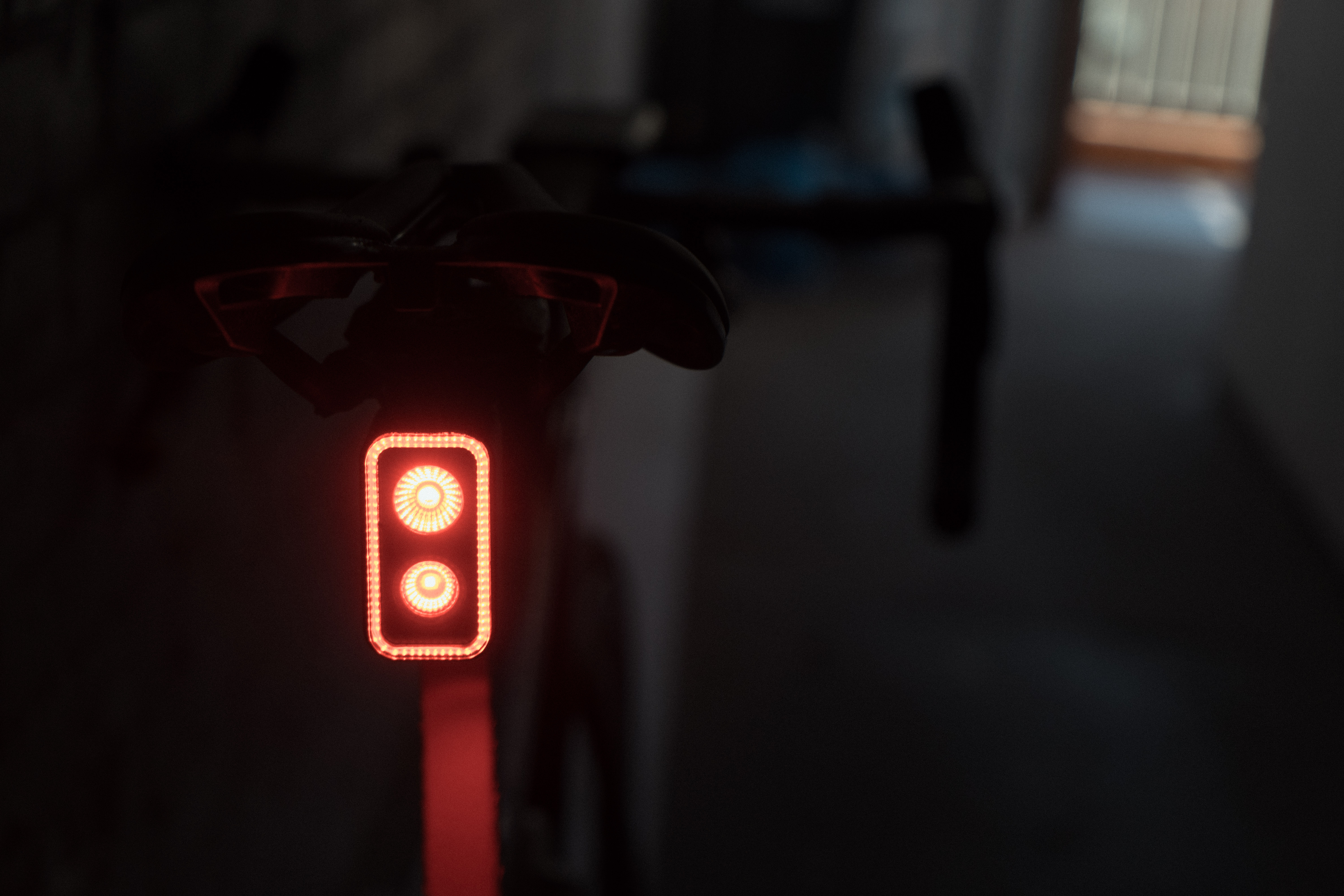
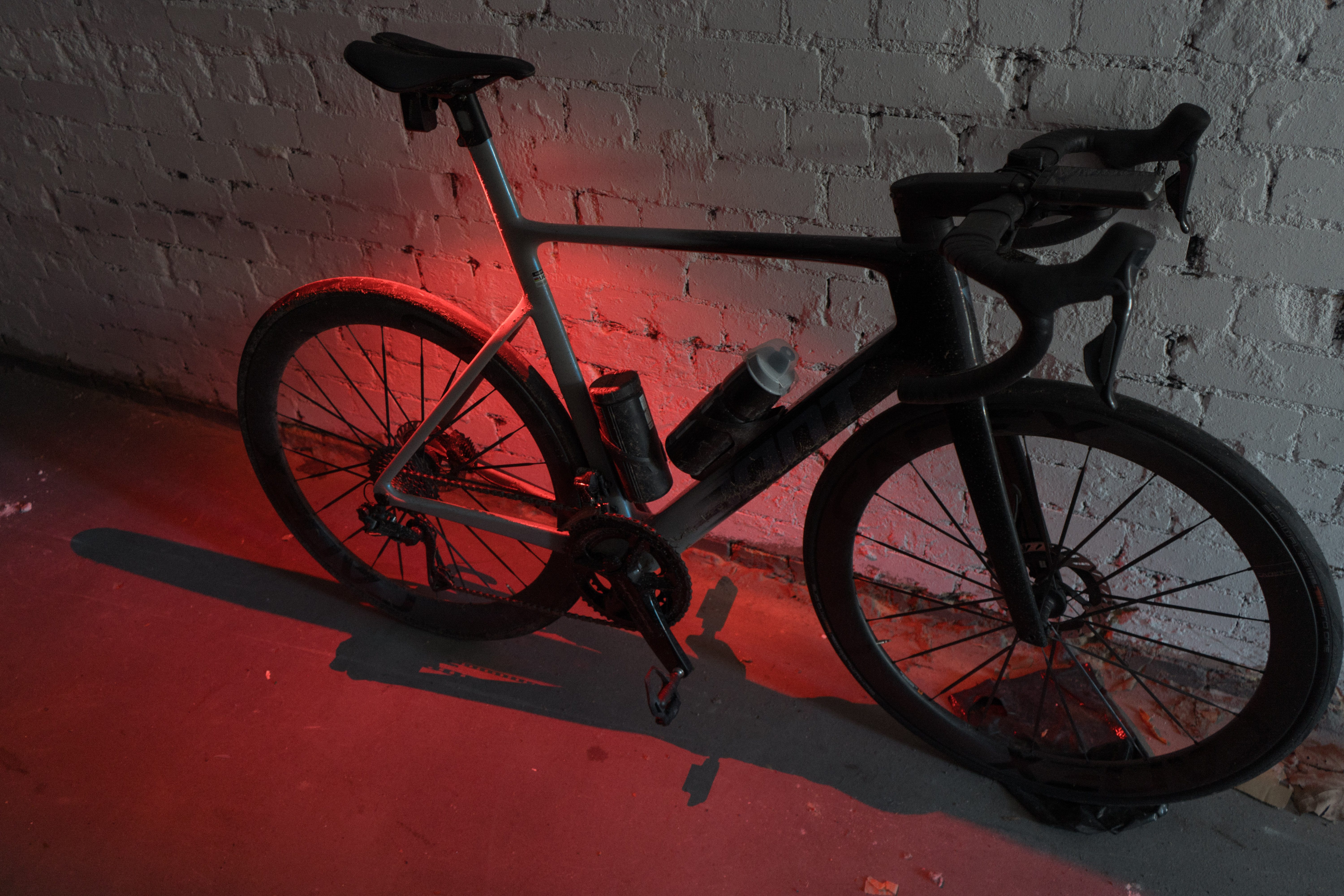

The mounts, particularly the saddle rail one if you have space on your rails, are ace. It’s a lot neater than the cradle and elastic system that the Exposure lights use, and a lot neater than a seatpost mount. The seatpost mount is great, works well on round posts, but I found it wanting on aero posts if they are D-shaped, often looking down to find the light off at a jaunty angle.
Before I get onto the downward bulb I should say that yes, this light is a little heavier than the competition, but in absolute gram terms it's minimal, and for that you get incredible battery life. Battery life anxiety is a real thing, but here it simply doesn’t exist, as I know that whatever happens, I’ll have enough juice to get home on low mode. Once the battery gets below 10% it’ll automatically switch to Eco mode and disable the brake light, so you don’t even need to think about doing it manually.
Now, the party piece: that downward bulb. It sounds on paper like a gimmick but in reality it’s great, and it’s why, along with the Knog Mid Cobber, it’s what I prefer to use especially within the city limits. Whether it’s flashing or solid you not only get this cone of light illuminating the street around your rear wheel, but your lower legs are also partially lit up too. It's a very effective thing indeed, it’s novel, and I rate it very highly.
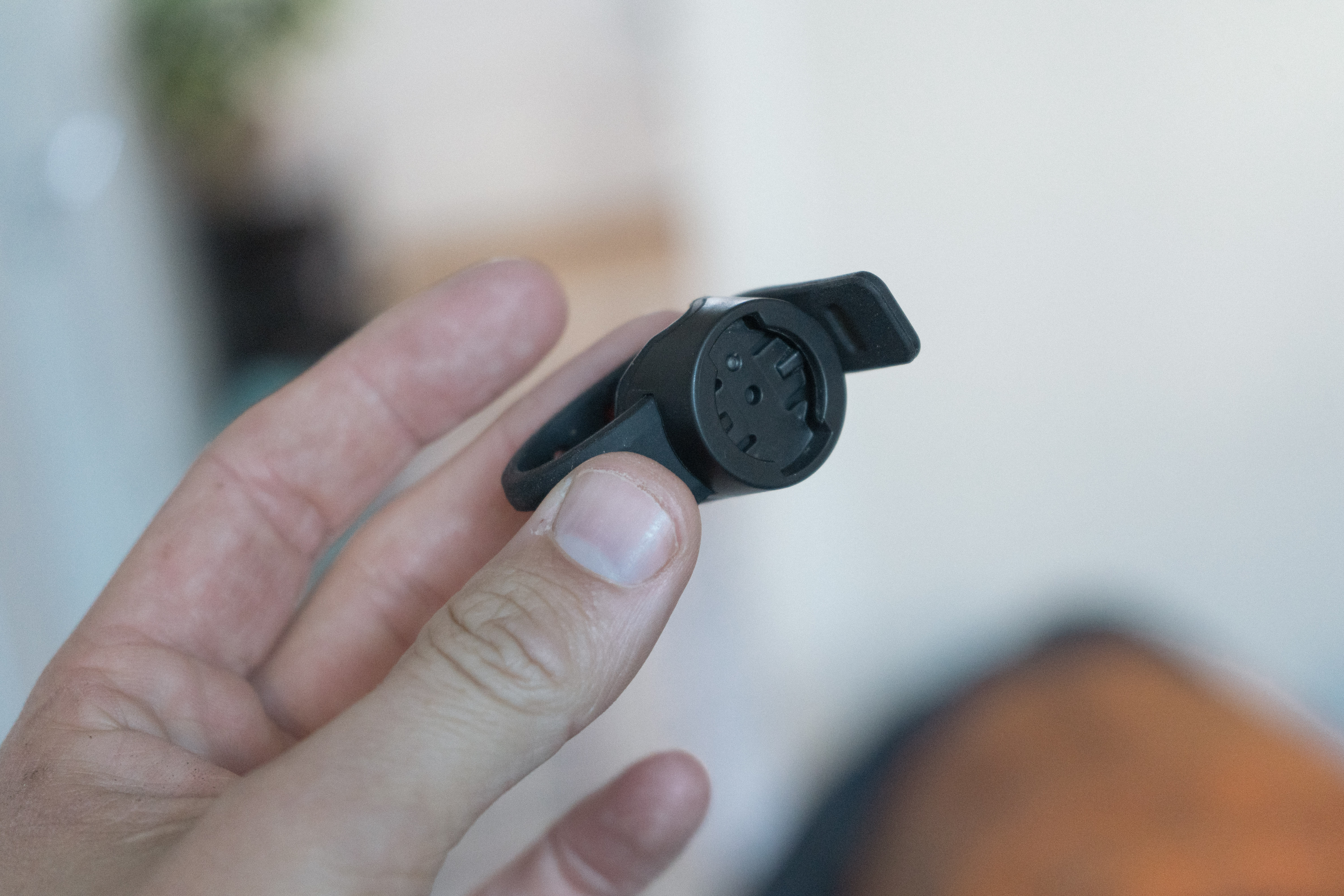
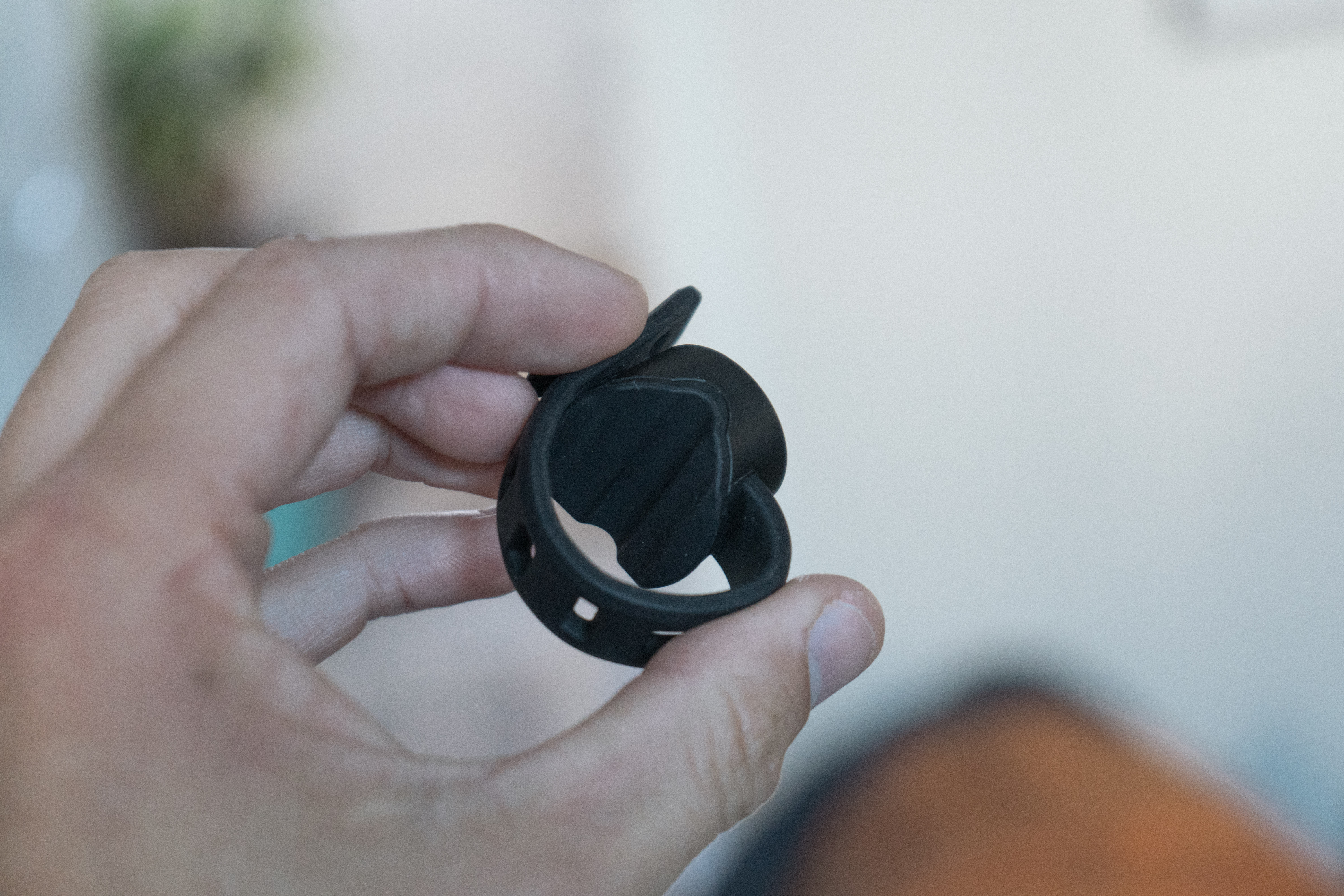
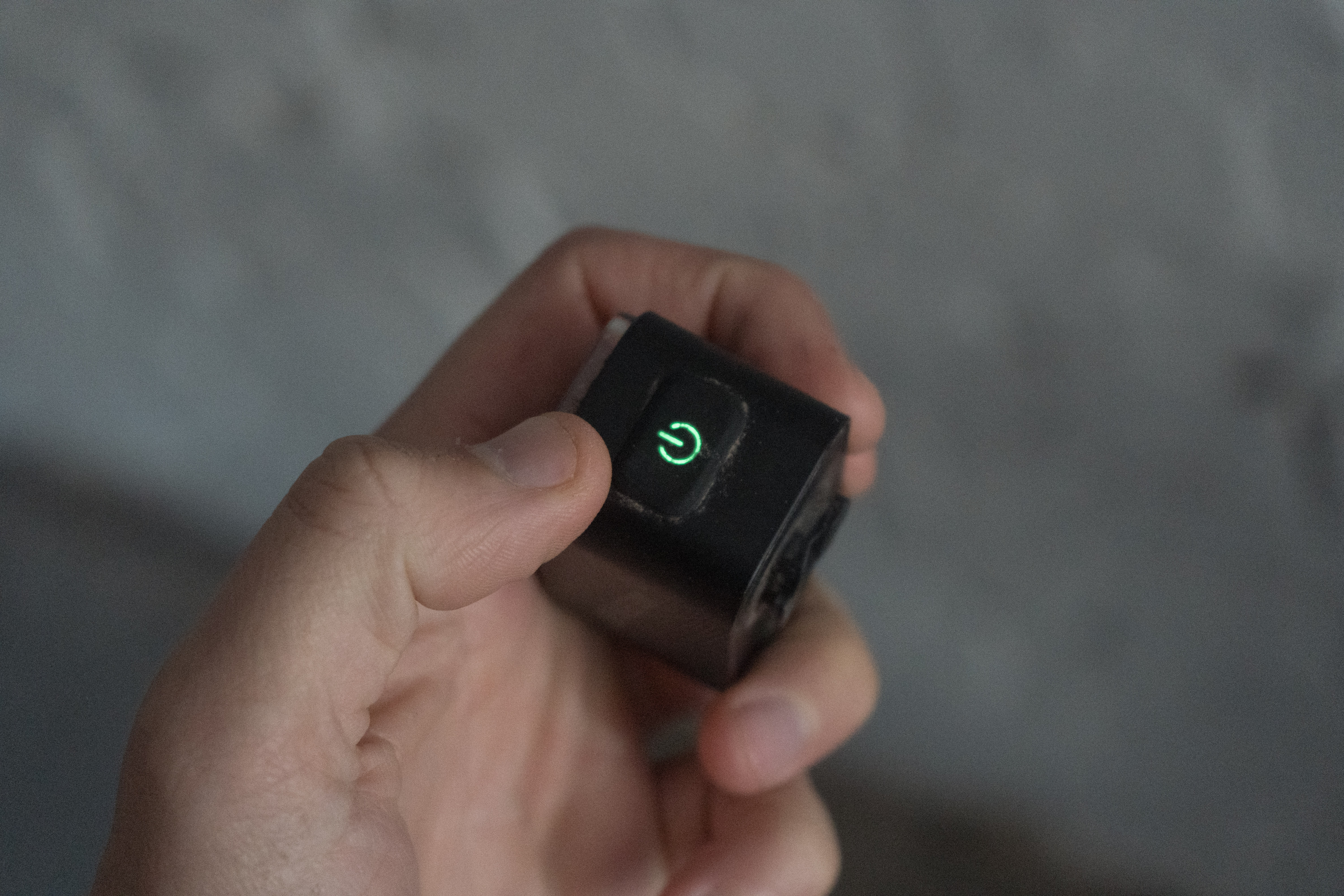
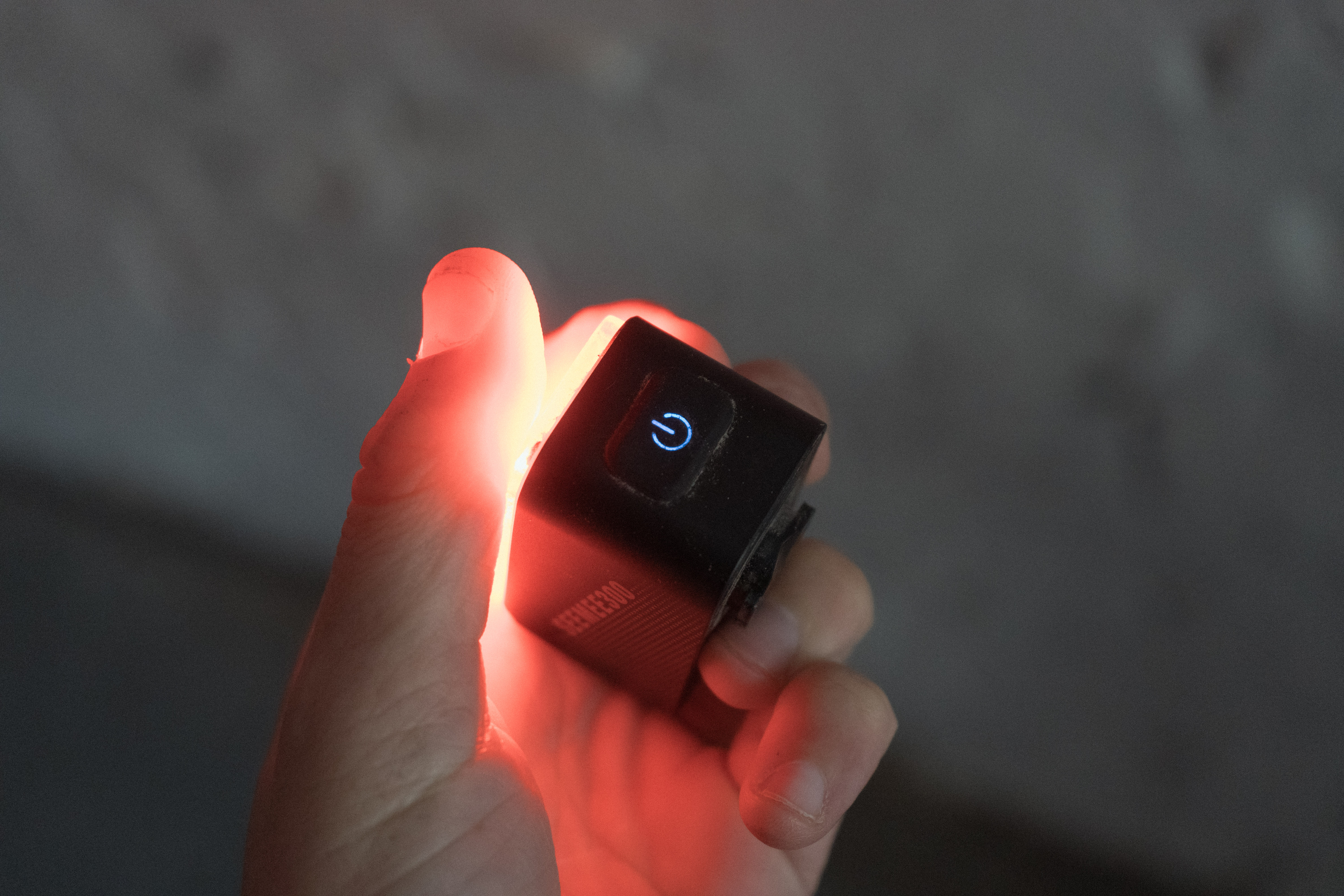
Value
What’s kind of mad is how cheap this light is. It is so packed with features, from the battery life, the smart dimming functionality, the brake lighting, through to the downward light, that you’d expect to be paying top dollar for it. In reality, it’s only £50/$60, and very frequently discounted. This is half the cost of the Exposure Boost-R, and while that is a really very excellent rear light, it isn’t twice as good. The value here is sensational.
Verdict
There is very little to fault here. The Magicshine SEEMEE300 packs a tonne of features into a well-made, very effective package. It does some things other lights on the market don’t in terms of battery life and additional visibility. It comes with great mounts. It’s bright, it’s relatively smart, and so far it has withstood some pretty horrible riding conditions. The only thing I can fault is the slightly confusing mode selection setup, and while the seatpost mount doesn’t work so well on a D-shape the saddle mount more than makes up for it.
All of this for half the price of similar performers, so it’s a pretty open-and-shut case to say this really is the best rear bike light on the market at the moment.
| Design and aesthetics | Well thought out, neat, sturdy build quality, and with that great extra downward bulb | 10/10 |
| Light quality | More than bright enough, with wide angle throw and added side visibility. The flashes aren't dazzling wither, and are more of a gentle pulse | 10/10 |
| Control Scheme | This is a little confusing. If you're a set and forget rider it'll be easy as it'll just remember the last setting that was used. | 8/10 |
| Battery life and charging | Market leading battery life. That's it. | 10/10 |
| Value | Incredibly, you get all of the features for a really quite cheap price. | 10/10 |
| Overall | Row 5 - Cell 1 | 96% |

Will joined the Cyclingnews team as a reviews writer in 2022, having previously written for Cyclist, BikeRadar and Advntr. He’s tried his hand at most cycling disciplines, from the standard mix of road, gravel, and mountain bike, to the more unusual like bike polo and tracklocross. He’s made his own bike frames, covered tech news from the biggest races on the planet, and published countless premium galleries thanks to his excellent photographic eye. Also, given he doesn’t ever ride indoors he’s become a real expert on foul-weather riding gear. His collection of bikes is a real smorgasbord, with everything from vintage-style steel tourers through to superlight flat bar hill climb machines.
